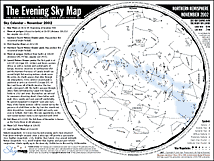Like most self respecting nerds, I love fractals. So what better way to celebrate winter than creating a fun card based on the famous Koch Snowflake (also know as the Koch star and island)!
A fractal is a geometric figure that has some pretty awesome special features. They have "self symmetry," creating detailed repeating patterns that are often described as "the same from near as from far." They're found all over the place in nature and are used in math and science in a variety of applications.
A fractal is a geometric figure that has some pretty awesome special features. They have "self symmetry," creating detailed repeating patterns that are often described as "the same from near as from far." They're found all over the place in nature and are used in math and science in a variety of applications.
One of the easiest to create by hand, and also one of the easiest to understand, is the Koch Snowflake. First described by Helge von Koch in 1904, this fractal is based on an equilateral triangle. To build it one, you create an equilateral triangle, then remove 1/3 of one side of the triangle and replace it with an new, smaller equilateral triangle. You repeat this process on each side, then repeat it on each side of each new triangle, and so on. The result is a shape that can literally have infinite perimeter, but finite area. Cool right?
So, for an extra nerdy card, I used the Koch Snowflake shape and created a fun, glittery pop up.
The process is simply to make a Koch snowflake template, trace that into a card and cut around the shape with a craft knife, leaving the shape attached to the base at a few points. Then fold the pop up in the opposite direction of the card, creasing the contact points carefully. Finish by backing with contrasting cardstock to create the front of your 4.24" x 5.5" card.
To make it more festive, I created snowflake "covers" that were just the Koch snowflake. These I embossed and glittered to make them stand out beautifully. I also used the inside of the double snowflake to create a custom stamp, simply tracing it onto craft foam and cutting it out, then adhering it to an acrylic block with some double-stick tape. I used it as I would any other stamp. This card reads "Baby, it's cold outside."
Now, I'll have really detailed instructions up on CRAFT soon, I hope, but in the mean time, why not just grab my templates and make a card the easy way?
Print the PDFs below onto cardstock and cut until your heart's content!
- Single Koch snowflake pop up card
- Single snowflake cover
- Double Koch snowflake pop up card
- Double snowflake cover
If you have a digital cutter, like I do, this all becomes very easy, indeed! I have an old first generation Silhouette from Quickutz. You can pick them up for about $100 on eBay, and they are amazingly useful. I use the free software Inkscape to design my digital cutting files and then the free software for the Silhouette to manipulate and cut the shapes. It's totally awesome!
Anyway, if you have such a machine, all you need to do is download the appropriate DXF or SVG file and let your computer do the work for you! You may opt to throw in a perforation or scoring line down the center when you cut to make folding easier, but I just used my Scoring Board. Now you can make cards for all your nerdy friends!! Huzzah!
- Single Koch snowflake pop up card (dxf)
- Single snowflake cover (dxf)
- Double Koch snowflake pop up card (dxf)
- Double snowflake cover (dxf)
- Single Koch snowflake pop up card (svg)
- Single snowflake cover (svg)
- Double Koch snowflake pop up card (svg)
- Double snowflake cover (svg)
Anyway, I hope you have fun. Be sure to share pictures of your cards!





















































